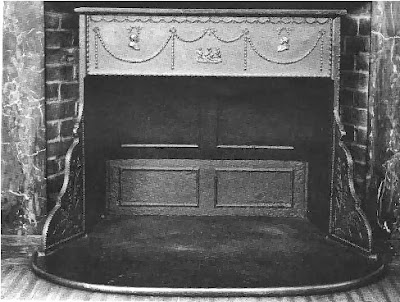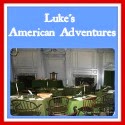Most colonial inventors took an already discovered idea or concept and built upon it. One of these innovators was Benjamin Franklin. Although he is well known for establishing the first fire department and lending library in the American colonies, Franklin invented some lesser known but equally valuable things that have been refined upon since the eighteenth century.
Bifocals, or “double spectacles,” as Franklin called his invention at the time, are eyeglasses with two halves, each with a different purpose. The top piece is for seeing at a distance, and the lower half is for reading. These glasses are prescribed commonly for people that have presbyopia, a condition that Franklin suffered from. Presbyopia is a condition that makes the eye lose the ability to focus on near objects as the person ages. Doctors still prescribe the use of bifocals today. Scientists have also revolutionized this invention further with the invention of trifocals. My brother has bifocals himself, and my grandparents wear trifocals.
 |
| Le Roy C. Cooley, 1881 US Public Domain |
Although Franklin did not invent electricity himself, he began to understand it in a way that no one had before. Before Franklin’s experiments, electricity was thought to be made of two opposing forces. However, he corrected this idea when he proposed the Single Fluid Theory. This idea states that electricity flows from a positive body with excess charge to a negative body, or a body with a negative charge. This is why a car battery, for example, has a positive rod, or the “plus” symbol, and a negative rod, or the “minus” symbol.
Once Franklin had an understanding of the behavior of electricity, he set out to protect houses from the destructive forces of lightning. A lightning rod, simply, is a rod attached to the top of a building, connected to the ground through wiring. The electric charge from lightning strikes the rod and is conducted harmlessly into the ground. This invention is still used today to protect houses from burning down and people from electrocution.
Benjamin Franklin was an avid swimmer from a very young age. Throughout his life he consistently promoted its health benefits. At the age of 11, he invented a pair of swim fins. Made out of two pieces of wood, they attached to Ben’s hands and allowed him to swim through Boston’s Charles River more quickly. They are early precursor to modern flippers.
Franklin was curious as to how far he was traveling by carriage in his role as postmaster for his travels between Philadelphia and Boston. With this in mind, he invented the odometer. While the concept of the odometer dates back to ancient times, Franklin created his own version. The concept for Franklin’s design was to attach the device near the wheels of a carriage to determine the circumference of the wheel and the number of revolutions required to travel a mile, and have the device register the distance traveled. Knowing the mileage from one place to another helps us determine how far we can reasonably go -- or at least decide if we need to stop for more gas!
In
Colonial times, fireplaces were used to warm homes. Invented in 1742,
the Franklin Stove was a metal-lined fireplace that stood in the middle
of the room and radiated heat in all directions. It also provided more
heat and less smoke than an open fireplace and used less wood. The
iron-insulated walls even absorbed the heat produced, providing warmth
to the room long after the fire went out. It was a way that a house
could stay warm longer during the winter months. Franklin was offered
the opportunity to patent his stove, but declined; he felt that
innovations should be shared for the good of all. As a result, many
others adjusted and adapted these stoves. Franklin's stove often
malfunctioned as the fire died down, and it was Philadelphian David
Rittenhouse who refined the exhaust piping that kept the fire oxygenated
as the flames settled into coals.
 |
| Franklin Stove Photo: National Parks Services/US Public Domain |
Franklin was a great lover of books, establishing the Library Company of Philadephia, the precursor to the Free Library of Philadelphia. However, he also invented another practical help for readers. Reaching books on high shelves was a challenge. Many libraries had ladders, but for a man of Ben’s portly stature, climbing a ladder was a risky endeavor. So, in 1786, Franklin solved the problem by inventing the "long arm.” It is a wooden pole with a grasping claw at the end. Today, people use the long arm to hang posters, grab things at a height, or simply as a child’s plastic toy.
To make things more comfortable for readers, he made modifications to improve and extend his library chair so that it could serve multiple purposes. His design allowed the chair to turn on its center, which made it convenient to a person who may want to turn to his library-shelf or side-table, as it could now be done without leaving his seat. In one model, Franklin even attached a fan that was operated by a foot pedal. He also created an extendable seat that allowed the chair to function as a small step ladder or stepping stool when the seat was raised. Today, his model is mostly used in many offices as a chair used to work at a computer.
The use of street lighting was first recorded in the ancient city of Antioch in the 4th century. However, Franklin introduced it to the United States, and because of this, many regard Philadelphia as the birthplace of street lighting in the United States. The street lamps in Franklin’s day were not very efficient - the glass globes tended to become dark with soot from the oil burned inside, so it required almost daily cleaning. Franklin determined that the problem had to do with a lack of airflow within the globe. Combined with later inventor Thomas Edison’s invention of the light bulb, street lights can be seen on the side of almost any major street in the United States.
Ben Franklin invented many things we use today. Franklin was always creating ways to help the people of colonial America, in both large and small ways. He also refused to accept a patent, knowing someone else would be able to refine his idea and should not be halted because he didn’t have the original idea. We should all be grateful for inventors like him, as they may just create something new that is needed for people in the future.
©2012- 2013 Adventures with Jude. All rights reserved. All text, photographs, artwork, and other content may not be reproduced or transmitted in any form without the written consent of the author. http://adventureswithjude.com



No comments:
Post a Comment